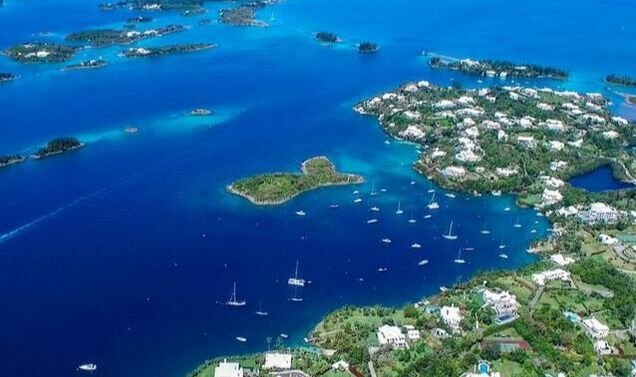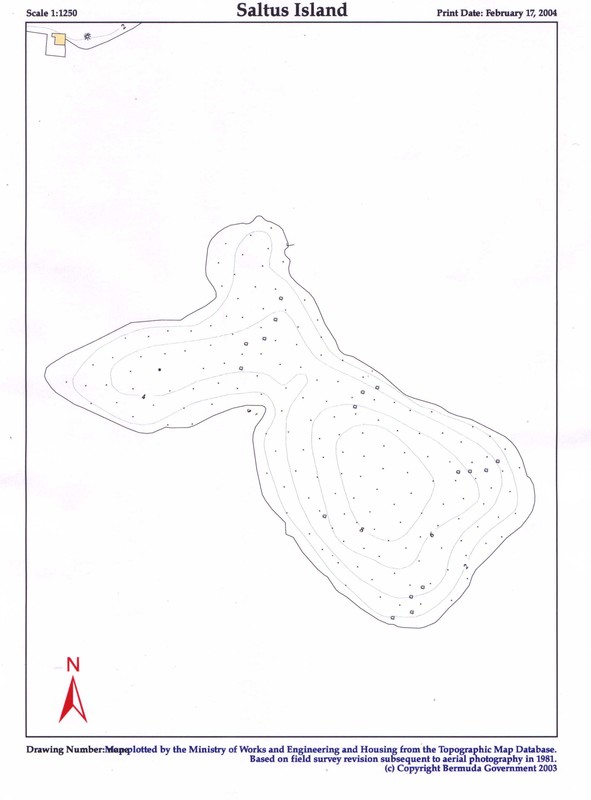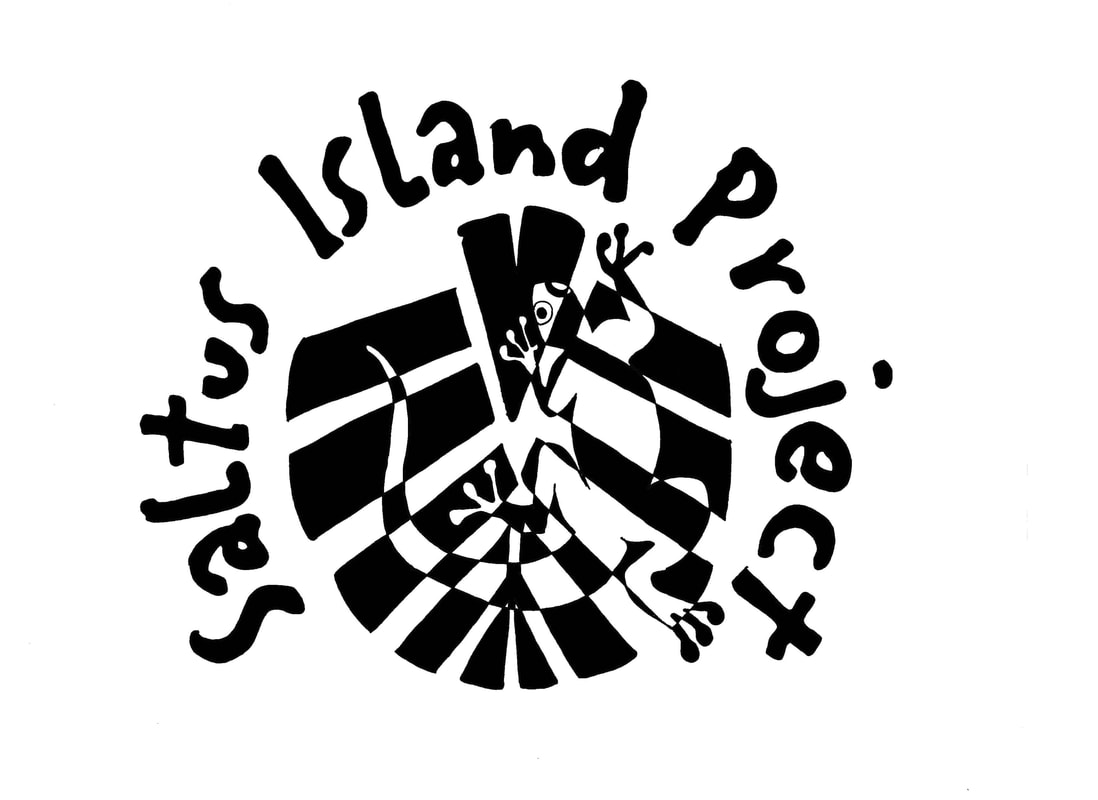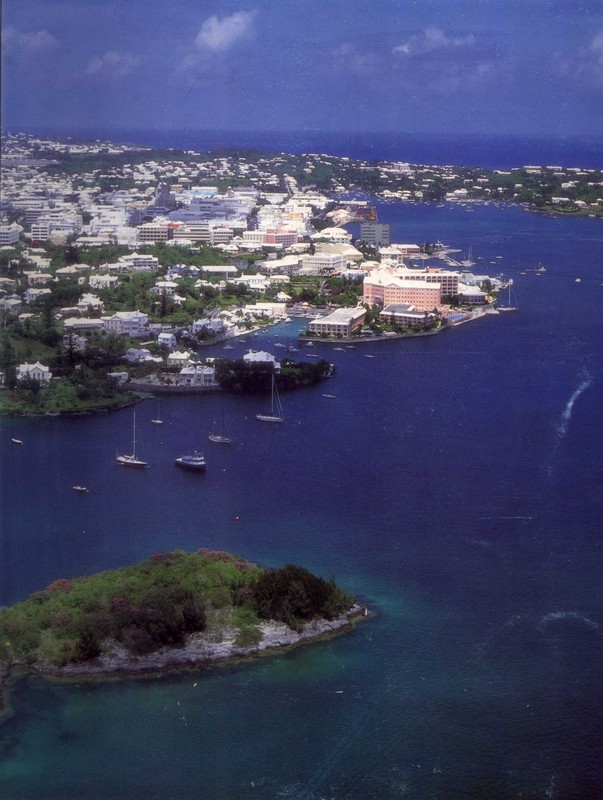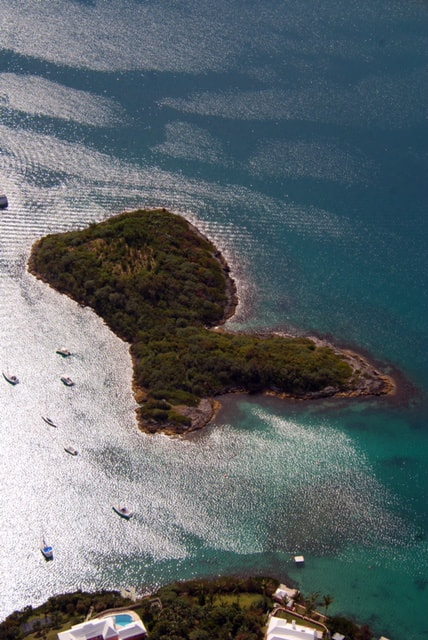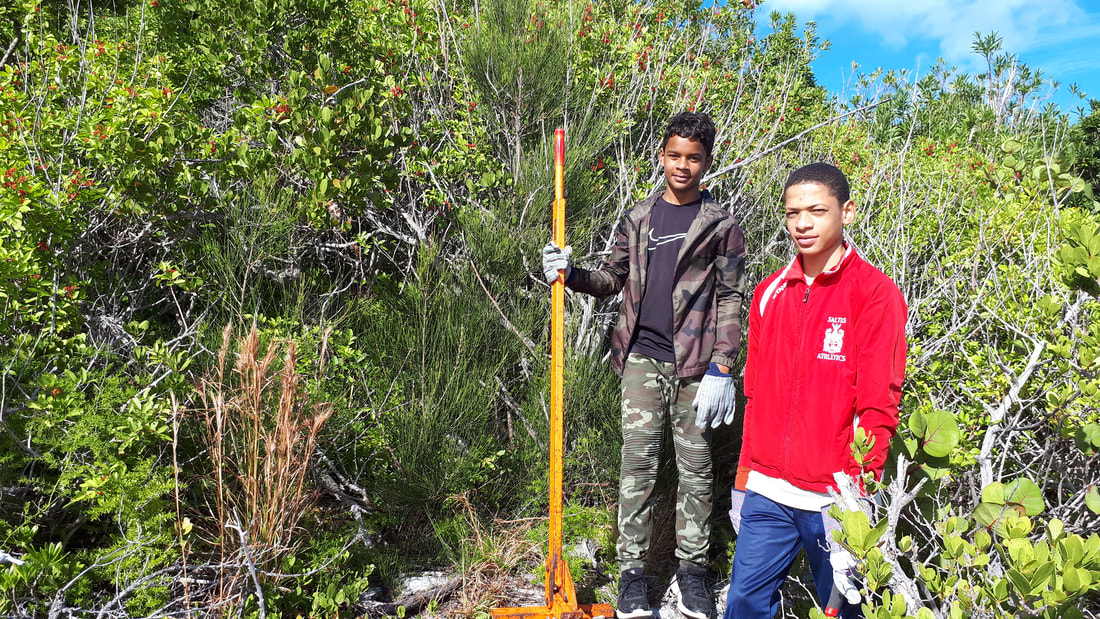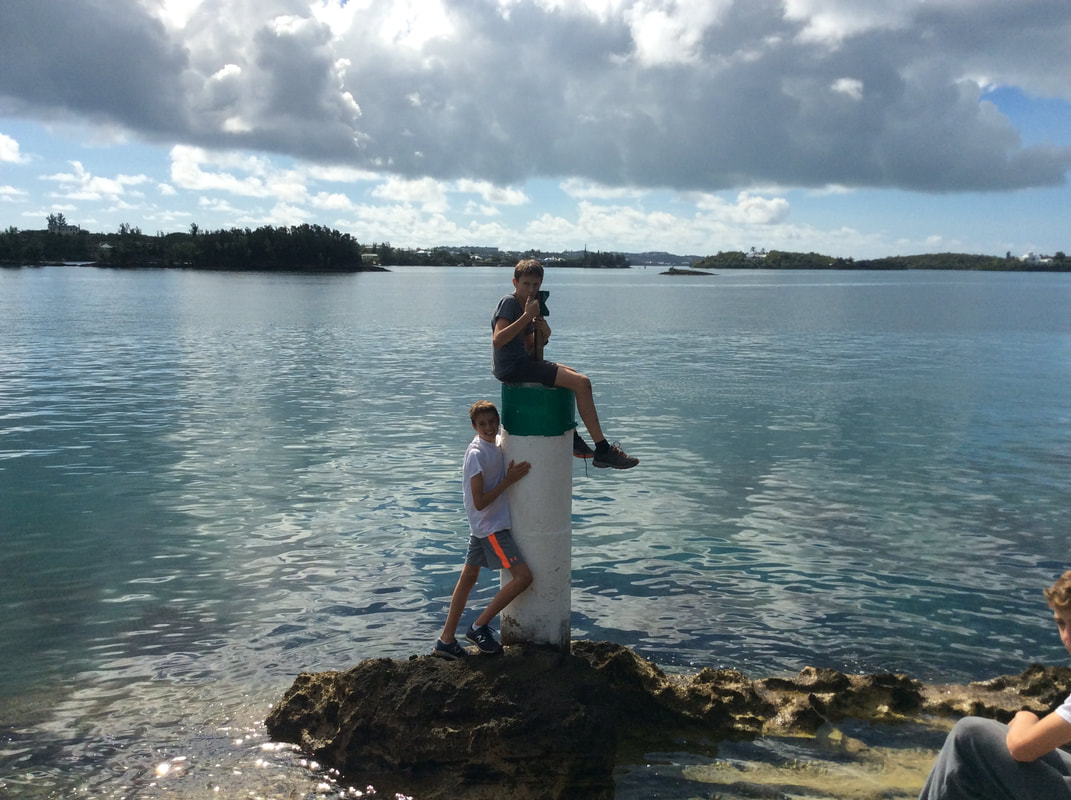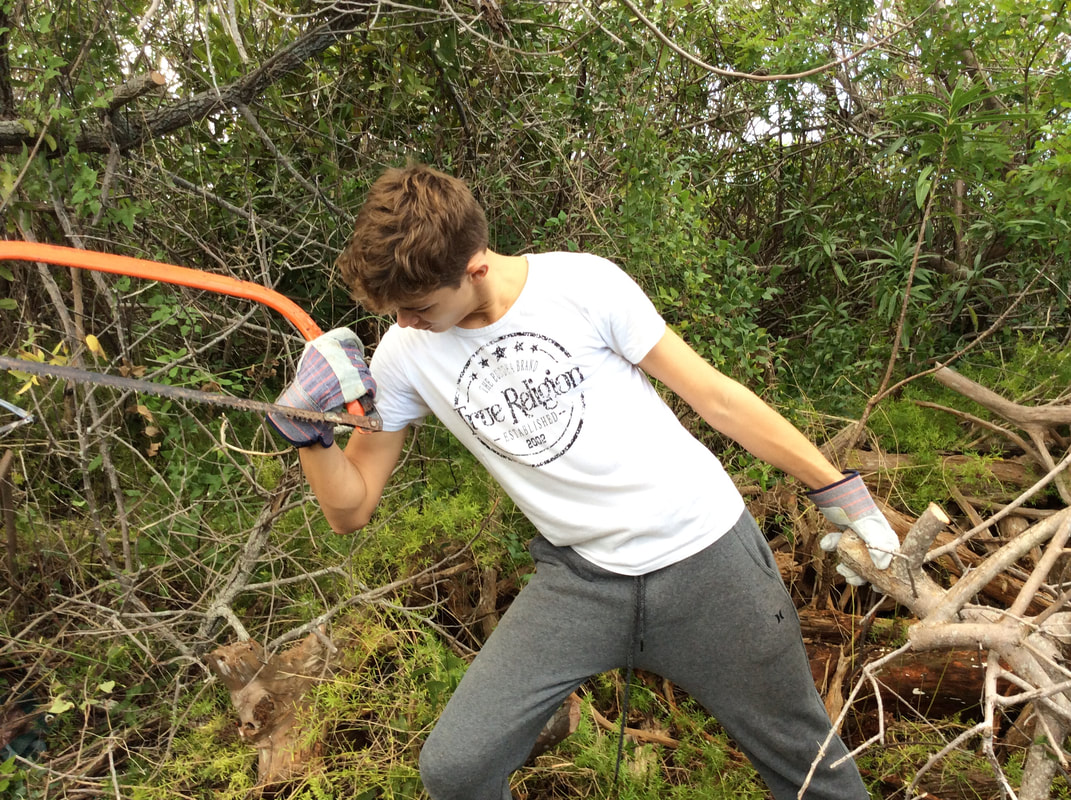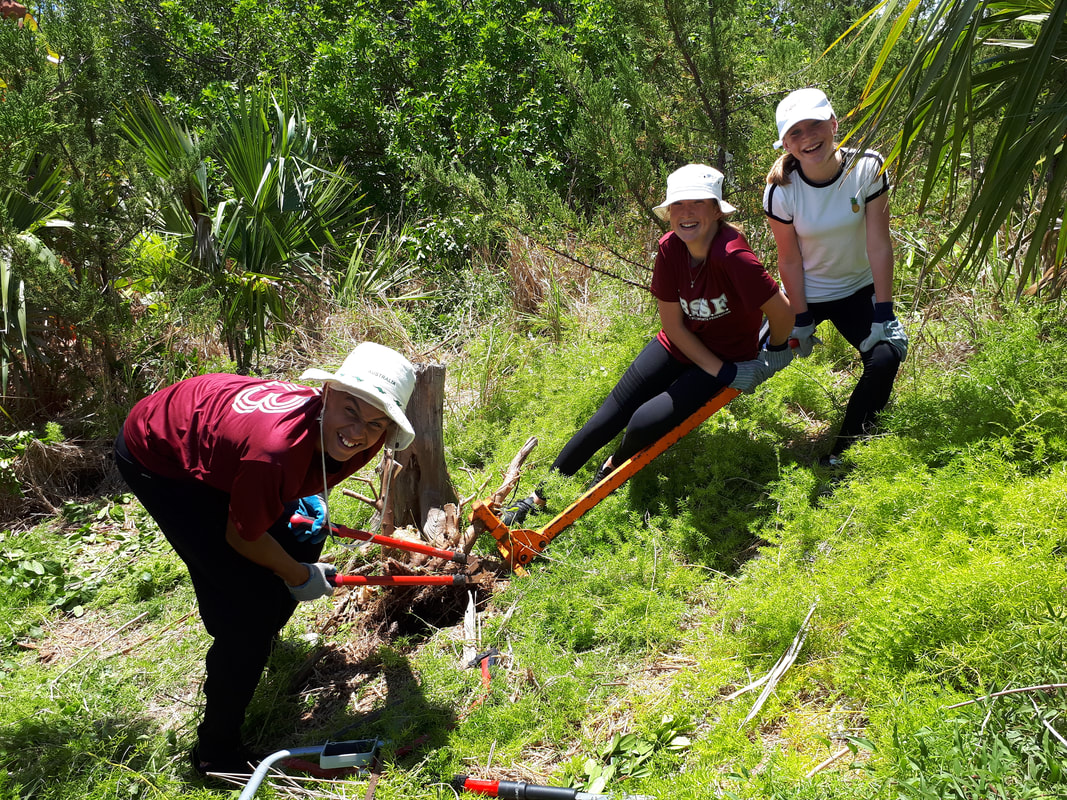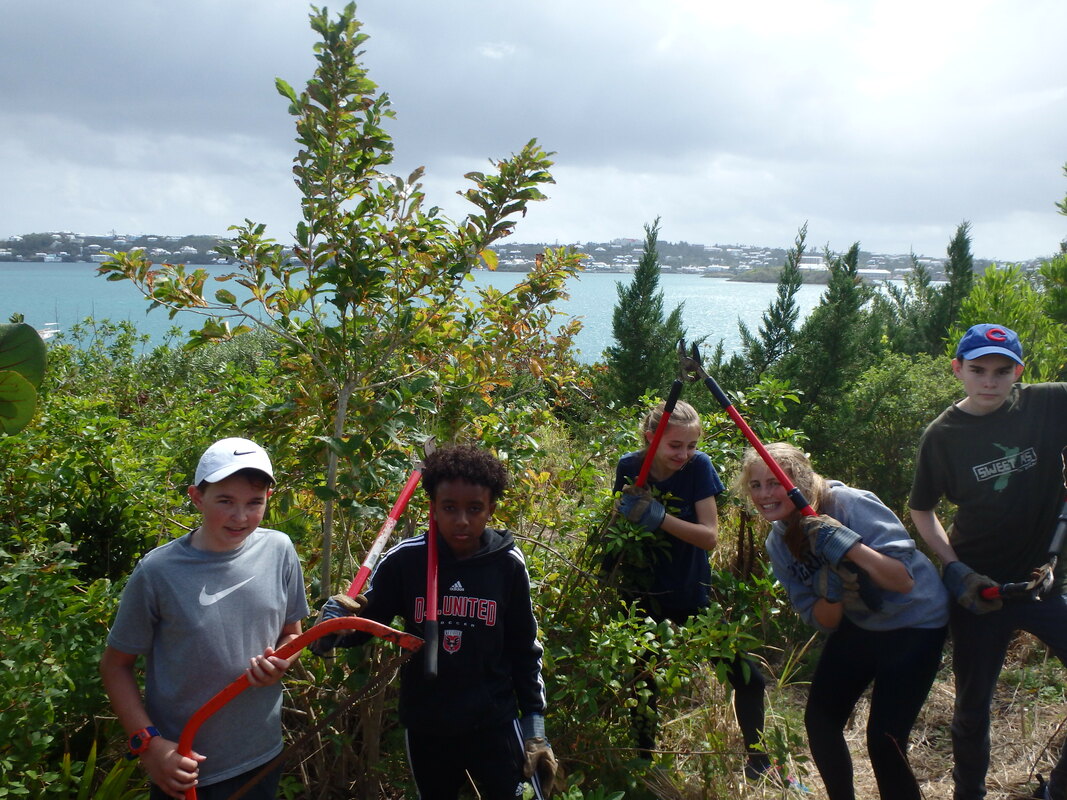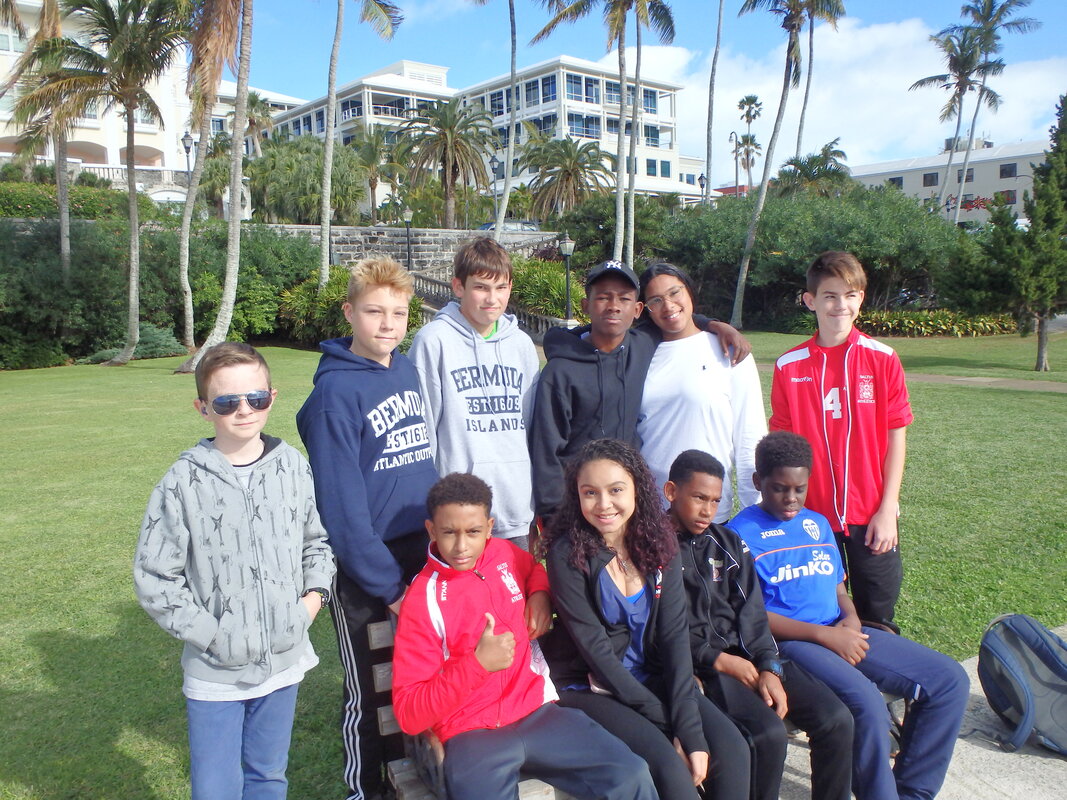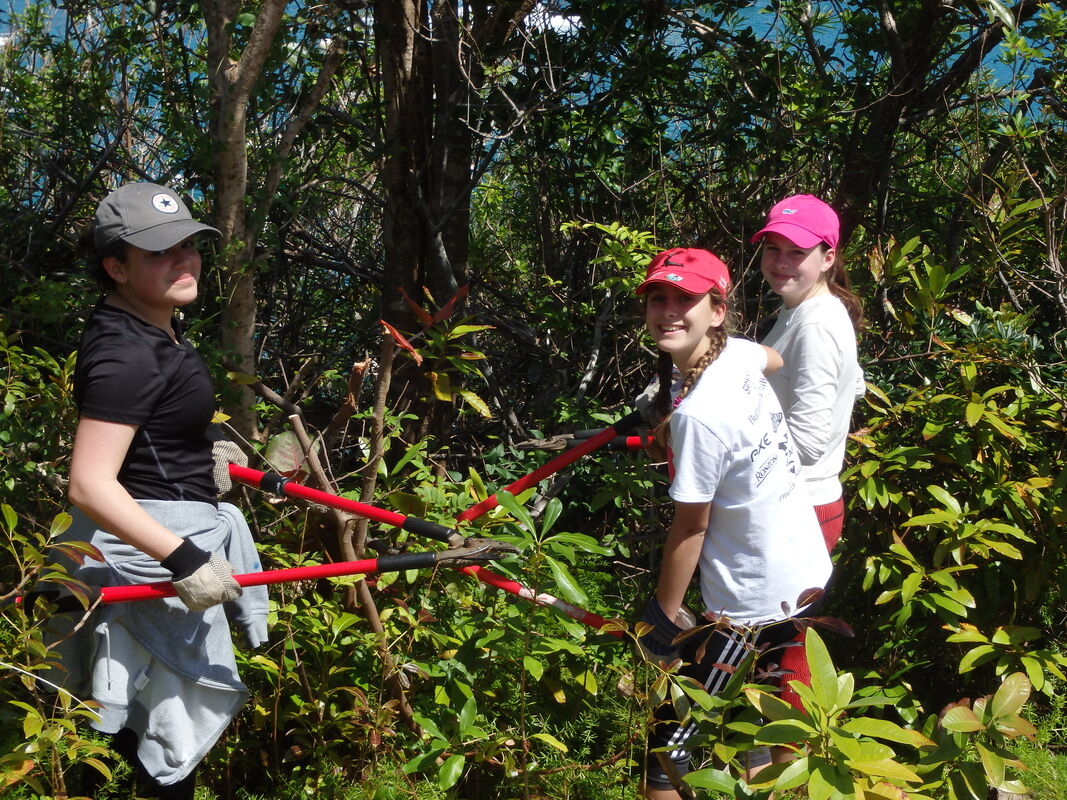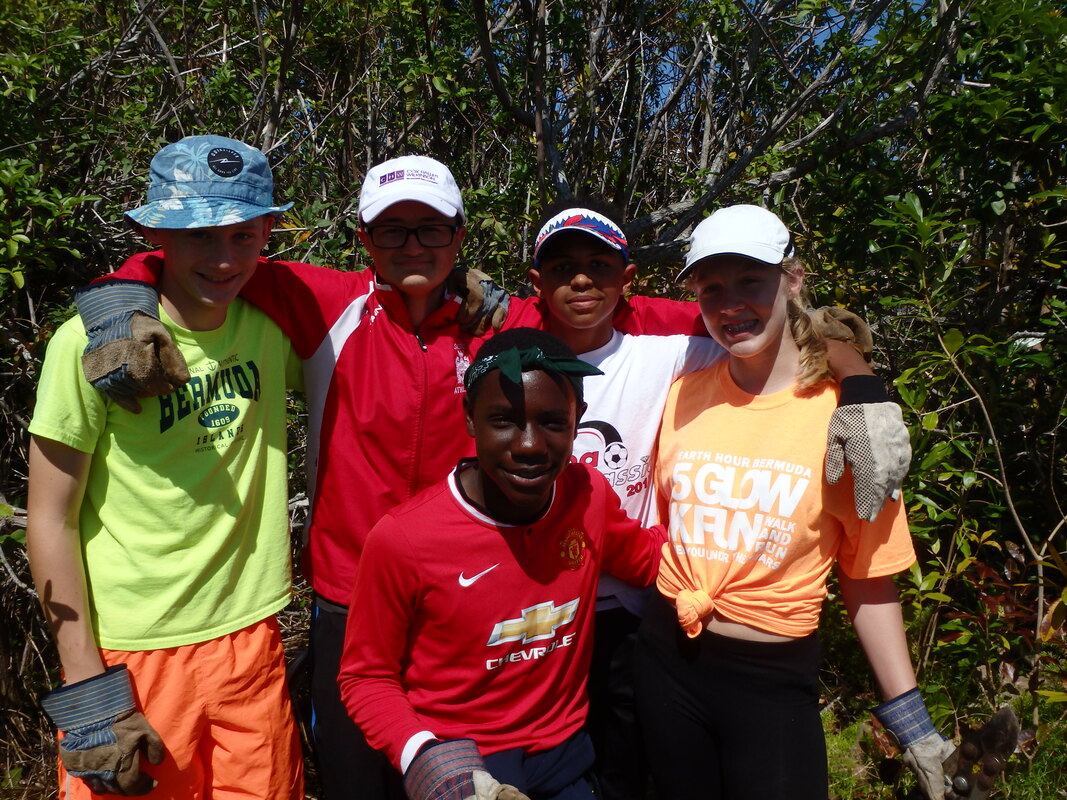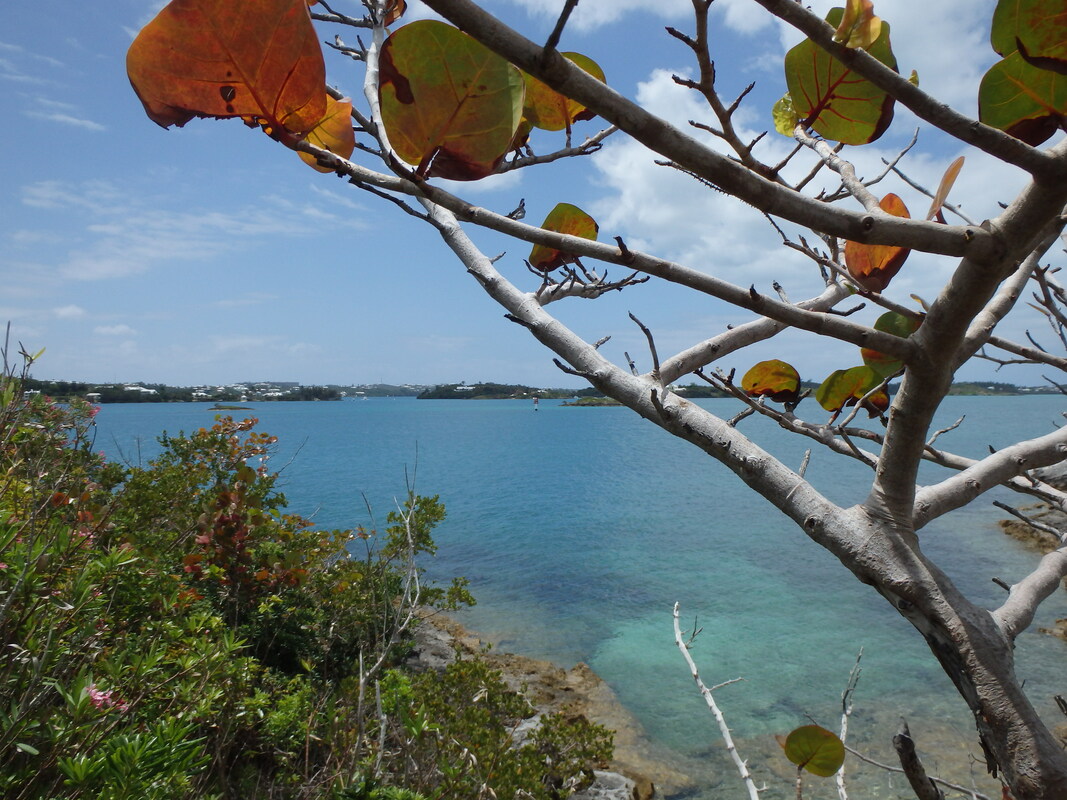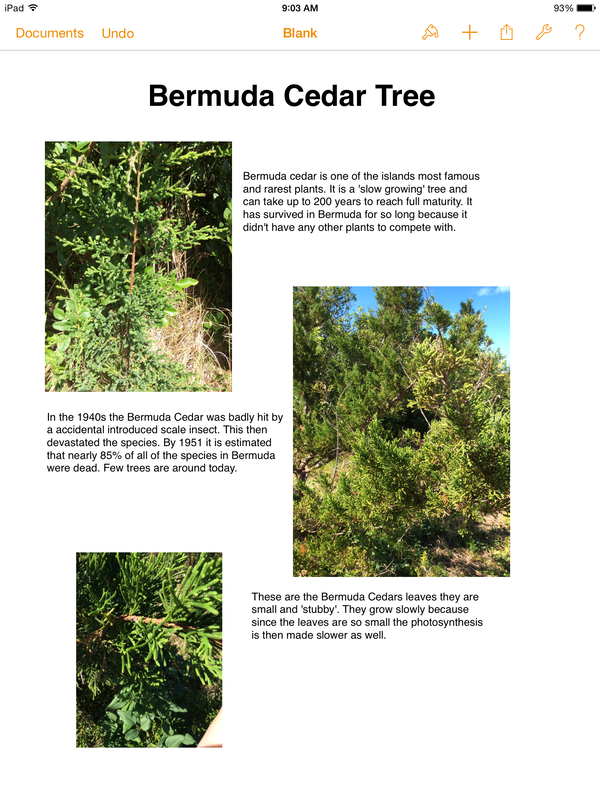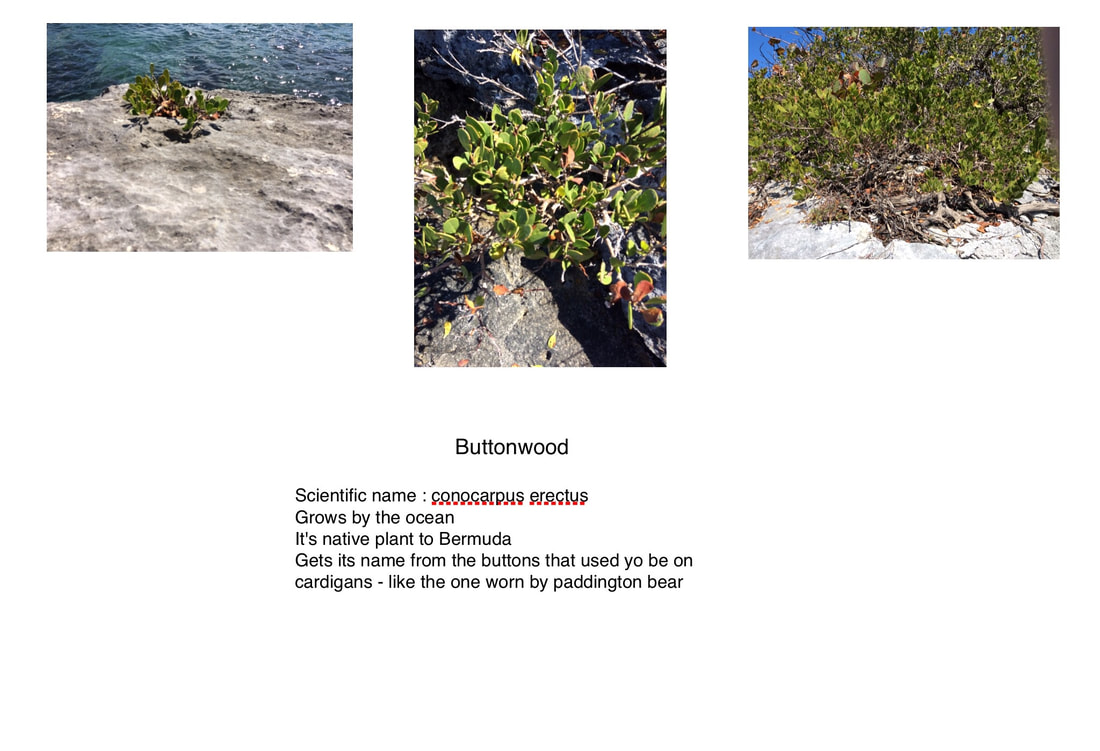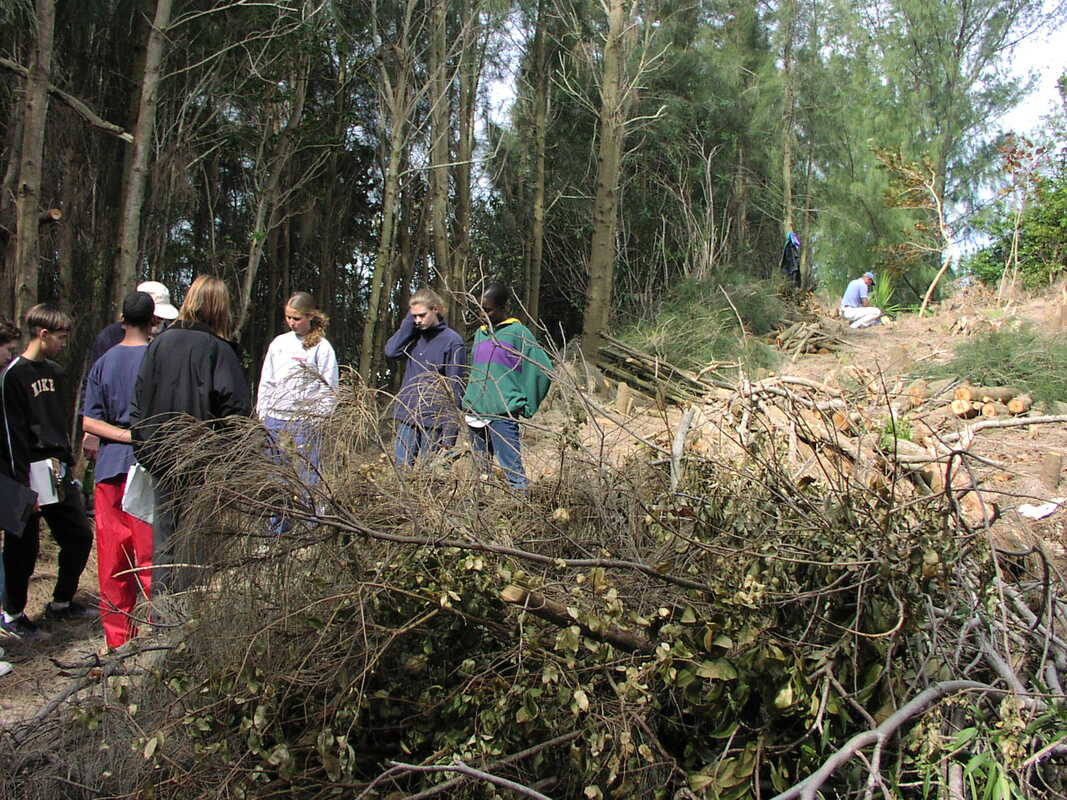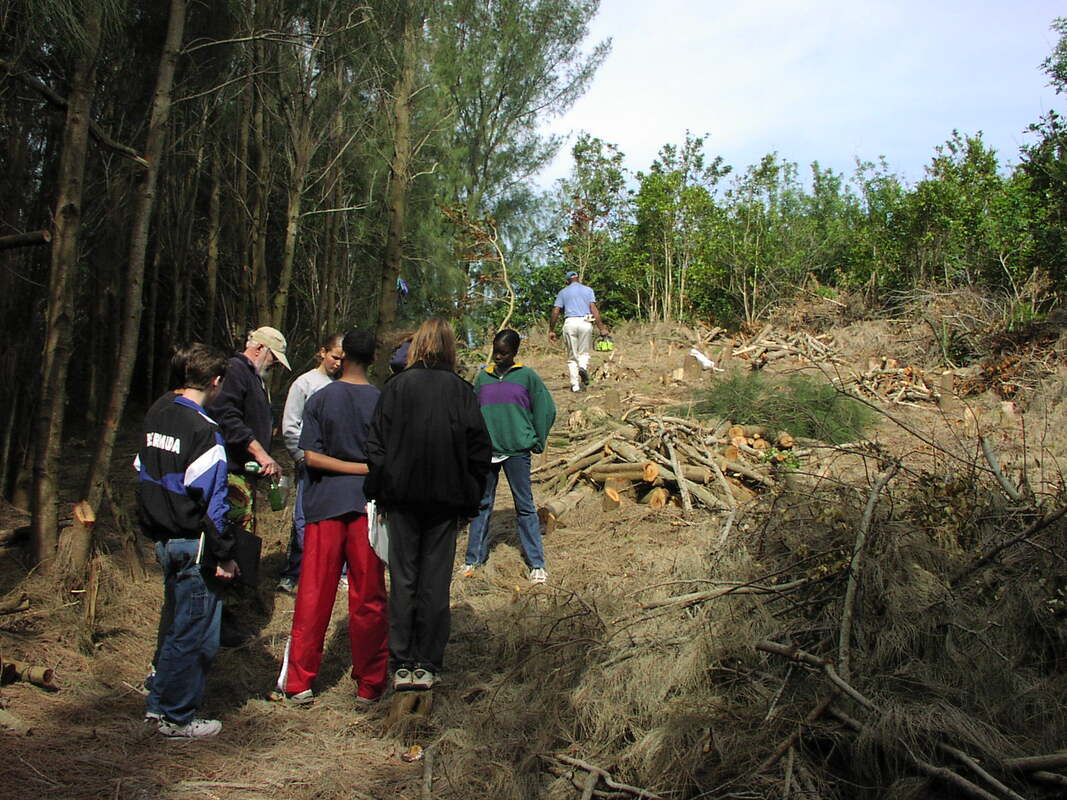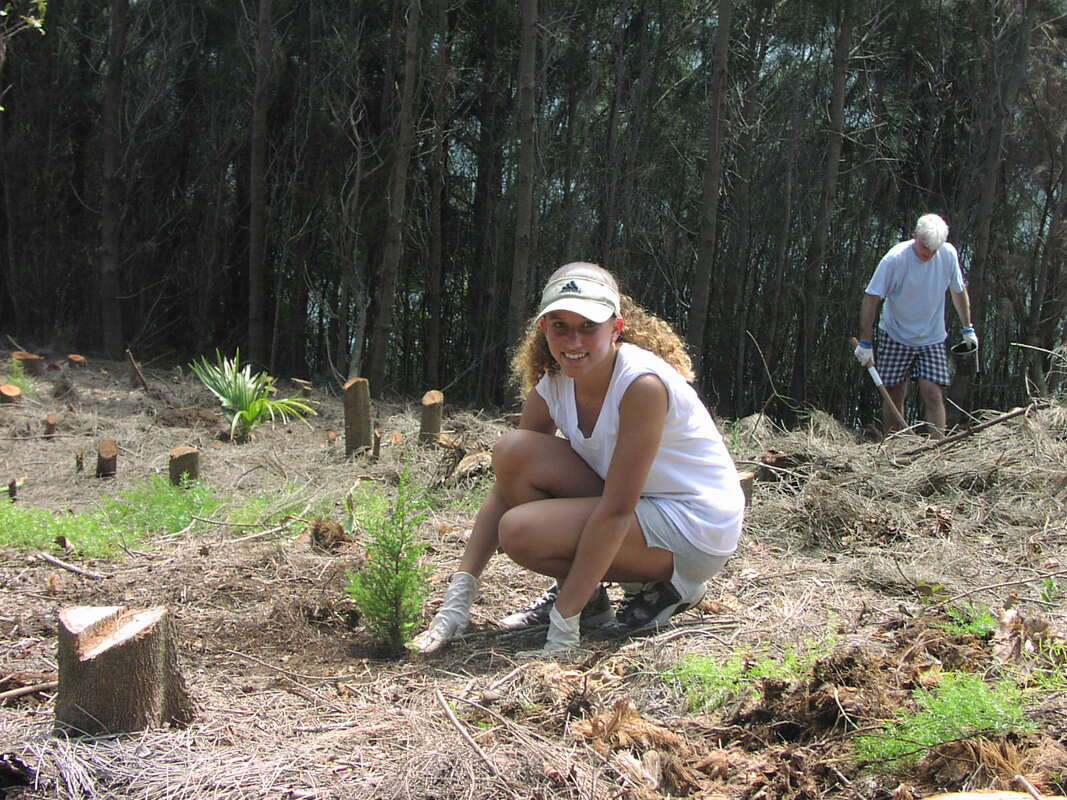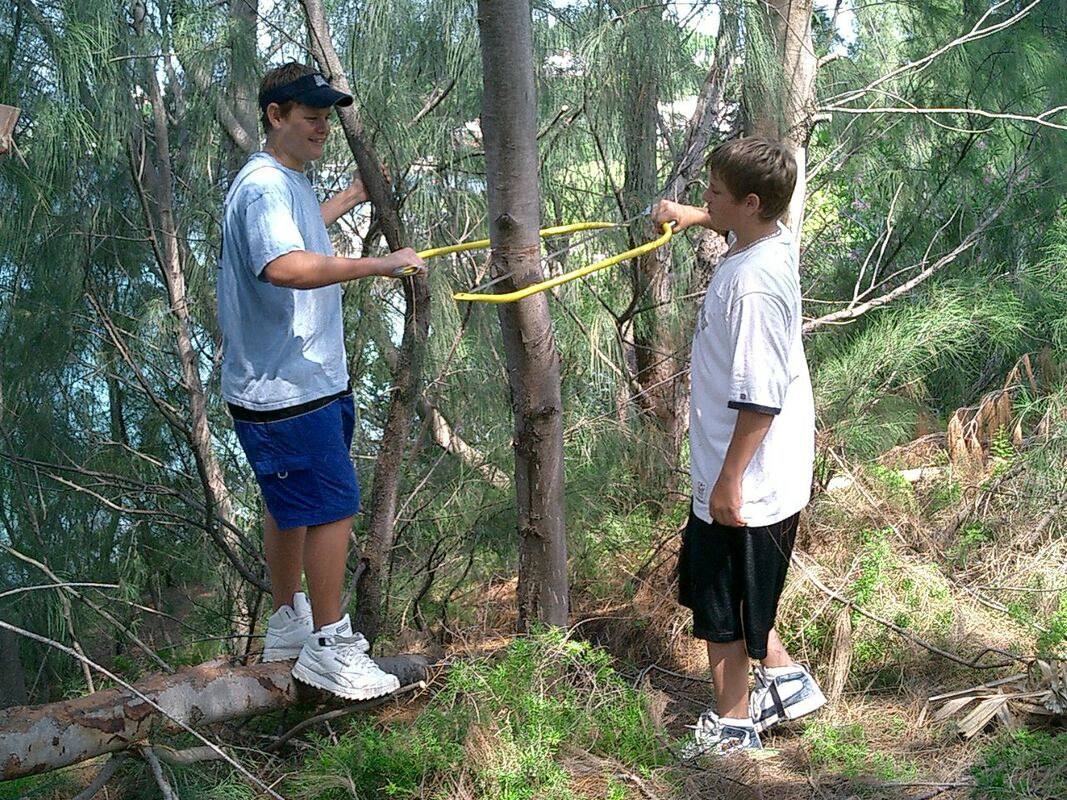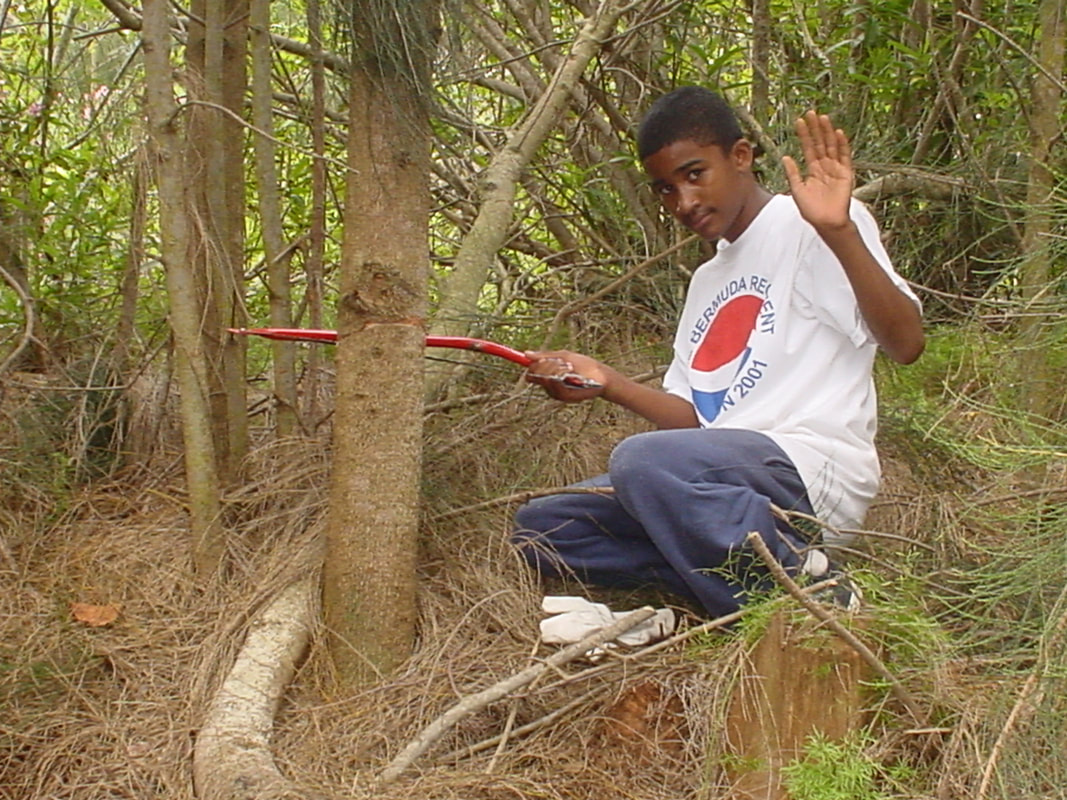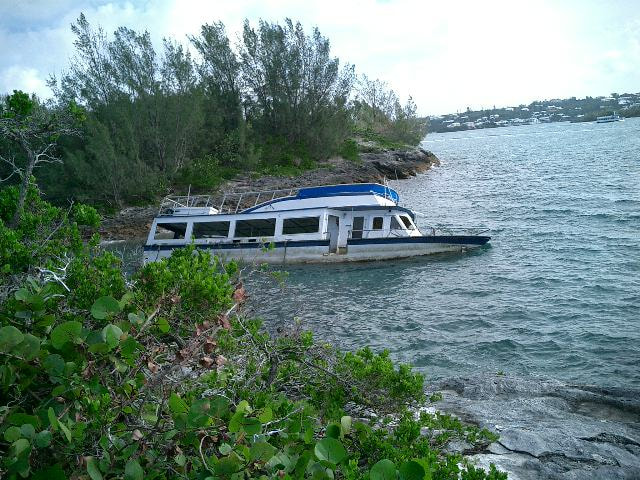Saltus Island is a pleasant green island of 3.19 acres in Hamilton Harbor’s Soncy Bay. The island originally belonged to Richard Norwood, the great surveyor of Bermuda. It was then passed to Samuel Saltus after the death of Norwood’s daughter. The island was un-named throughout the mid 19th century until it was labeled Saltus’ Island on Savage’s survey.
The island has no buildings on it, but Dr. Theodore Gilbert made several attempts to build a small hospital for sailors who may have had infectious diseases when they arrived in Bermuda. The southern end of the island clearly shows where rock was cut in preparation for building work. When his attempts fell through, he made do with quarters near Hamilton, paying all the expenses of nurses and attendants himself, and only charging one shilling and eight pence per day. This little island, with its oleanders and century plants, was part of the Norwood estate, until recently they donated it to the Bermuda National Trust.
In 2001 local resident Jim Butterfield and National Trust director Steve Conway were concerned about the number of Casuarina on the island. They enlisted then Head of Geography, Duncan Ashworth, to start a project to use students to clear some of the island. When Duncan left the project passed onto physics teacher Steve Briggs. Since 2013 it has been managed by another physics teacher, Paul Wright. Each year students from Senior 9 travel to the island (transport provided by the marine police) and learn about both local and foreign plants. They then help to remove the invasive species and clear land ready for planting. Students can sponsor their own tree which they can plant on the island during their visit. Weather permitting all students get at least two chances to visit the island during Senior 9. The project has been a welcome recipient of grants from the UK OTEP (Overseas Territories Environmental Programme) and the BDA Department of Environment. Funds were used to buy tools and equipment for staff and students to use.
The current status is that about 25% of the island has been cleared and over 100 cedar trees are well established as well as a large number of olivewoods. The constant battle is to maintain the cleared area of peppers as well as expand the clearance.
A typical day for the students:
11:00 meet the Marine Police boat at Barr's Bay Park for transport to the island.
11:30 tour of the island, history, plants and tool safety
12:00 - 13:00 maintenance of cleared area, some students to research plant types
13:00 - 14:00 groups work on; path clearance, surveying, expanding cleared area, casuarina hunting
14:00 - 14:30 all staff and students on a big push of a defined area.
14:30 - 15:00 clear away tools and swimming,
15:00 Marine Police pick up and transport to Barr's Bay Park
National Trust information
Goal - The Bermuda National Trust's goal is to protect Saltus Island as a nature reserve and undeveloped open space forming part of the natural landscape of this part of Hamilton Harbour.
Objectives - to maintain the island with limited interference as a natural habitat and as a preserve for bird life and to manage the natural habitat and encourage the growth of native and endemic species. To do this, a programme of selective conservation work will be carried out to cull out invasive species to ensure that the island does not become fully infiltrated by Casuarina and Brazilian Pepper to the detriment of all other species. The Casuarina is of the walking type and has established a dense copse on the southern end of the island. This is expanding and needs to be removed and controlled to permit selective planting to introduce native and endemic species in spaces created by the removal of the invasives. Members of the public are not permitted on the island without the consent of the Bermuda National Trust so that the island remains as an undisturbed natural habitat and a preserve for birdlife
The island has no buildings on it, but Dr. Theodore Gilbert made several attempts to build a small hospital for sailors who may have had infectious diseases when they arrived in Bermuda. The southern end of the island clearly shows where rock was cut in preparation for building work. When his attempts fell through, he made do with quarters near Hamilton, paying all the expenses of nurses and attendants himself, and only charging one shilling and eight pence per day. This little island, with its oleanders and century plants, was part of the Norwood estate, until recently they donated it to the Bermuda National Trust.
In 2001 local resident Jim Butterfield and National Trust director Steve Conway were concerned about the number of Casuarina on the island. They enlisted then Head of Geography, Duncan Ashworth, to start a project to use students to clear some of the island. When Duncan left the project passed onto physics teacher Steve Briggs. Since 2013 it has been managed by another physics teacher, Paul Wright. Each year students from Senior 9 travel to the island (transport provided by the marine police) and learn about both local and foreign plants. They then help to remove the invasive species and clear land ready for planting. Students can sponsor their own tree which they can plant on the island during their visit. Weather permitting all students get at least two chances to visit the island during Senior 9. The project has been a welcome recipient of grants from the UK OTEP (Overseas Territories Environmental Programme) and the BDA Department of Environment. Funds were used to buy tools and equipment for staff and students to use.
The current status is that about 25% of the island has been cleared and over 100 cedar trees are well established as well as a large number of olivewoods. The constant battle is to maintain the cleared area of peppers as well as expand the clearance.
A typical day for the students:
11:00 meet the Marine Police boat at Barr's Bay Park for transport to the island.
11:30 tour of the island, history, plants and tool safety
12:00 - 13:00 maintenance of cleared area, some students to research plant types
13:00 - 14:00 groups work on; path clearance, surveying, expanding cleared area, casuarina hunting
14:00 - 14:30 all staff and students on a big push of a defined area.
14:30 - 15:00 clear away tools and swimming,
15:00 Marine Police pick up and transport to Barr's Bay Park
National Trust information
Goal - The Bermuda National Trust's goal is to protect Saltus Island as a nature reserve and undeveloped open space forming part of the natural landscape of this part of Hamilton Harbour.
Objectives - to maintain the island with limited interference as a natural habitat and as a preserve for bird life and to manage the natural habitat and encourage the growth of native and endemic species. To do this, a programme of selective conservation work will be carried out to cull out invasive species to ensure that the island does not become fully infiltrated by Casuarina and Brazilian Pepper to the detriment of all other species. The Casuarina is of the walking type and has established a dense copse on the southern end of the island. This is expanding and needs to be removed and controlled to permit selective planting to introduce native and endemic species in spaces created by the removal of the invasives. Members of the public are not permitted on the island without the consent of the Bermuda National Trust so that the island remains as an undisturbed natural habitat and a preserve for birdlife
Bermuda Government - a few pages re: Bermudian plant and animal species and invasives.
|
|
|
|
2018 - 2019 Trip Photos
Trip 1 - 14 December 2018 9K (PW and Lorne)
First trip since May 2018, postponed three times due to weather or staffing issues! Tasks achieved included: cedar maintenance (removing ivy and peppers around bases), path clearance, discovery and removal of seven young casuarina trees, five new loppers and two new saws brought to the island. Attempted to get chipper to work, but no spark evident at the plug. Cedars are in beautiful condition - the warm weather and heavy rains have really helped them, sadly the peppers have thrived too!
First trip since May 2018, postponed three times due to weather or staffing issues! Tasks achieved included: cedar maintenance (removing ivy and peppers around bases), path clearance, discovery and removal of seven young casuarina trees, five new loppers and two new saws brought to the island. Attempted to get chipper to work, but no spark evident at the plug. Cedars are in beautiful condition - the warm weather and heavy rains have really helped them, sadly the peppers have thrived too!
Trip 2 - 8 February 2019 9J (mostly!) (PW and Takara)
Cedars are still in great shape - thriving. The wind was calm and so the weather was quite warm for February. Decided to focus on the top of the hill between the tool shed and the lunch area as the cedars are now growing so much outwards that they are becoming an obstacle. Behind the tool shed and boxes is a huge pepper - so we started work on that. As with previous years, Takara is brilliant and motivating the students at their destructive tendencies. Great for large area clearance! Small batches of students took the ipads and plant guides to make short video clips and photos of the project. Look forward to editing those together during the spring.
Cedars are still in great shape - thriving. The wind was calm and so the weather was quite warm for February. Decided to focus on the top of the hill between the tool shed and the lunch area as the cedars are now growing so much outwards that they are becoming an obstacle. Behind the tool shed and boxes is a huge pepper - so we started work on that. As with previous years, Takara is brilliant and motivating the students at their destructive tendencies. Great for large area clearance! Small batches of students took the ipads and plant guides to make short video clips and photos of the project. Look forward to editing those together during the spring.
2017 - 2018 Trip Photos
September 2017 - School was donated a new wood chipper by Roderick and Martha Ferguson! The old one had not worked properly since being flooded by Hurricane Joaquin in 2015.
Trip 1 - 05 December 2017 (9J - PW and Takara)
Trip 2 -
Trip 3 - 24 April 2018
Trip 4 - 14 May 2018 (PW and ???)
Trip 5 - 22 May 2018 9J (PW and Michael Patterson)
Last trip of the academic year as already starting to get too hot to work efficiently!
Last trip of the academic year as already starting to get too hot to work efficiently!
2016 - 2017 Trip Photos
2015 - 2016 Trip Photos
Some Historical Photos (from the early days of the project)
The project was started in 2002 by the Bermuda National Trust and Saltus Grammar School. Looking back at the old photos, one is struck by how much the island has gradually changed.
